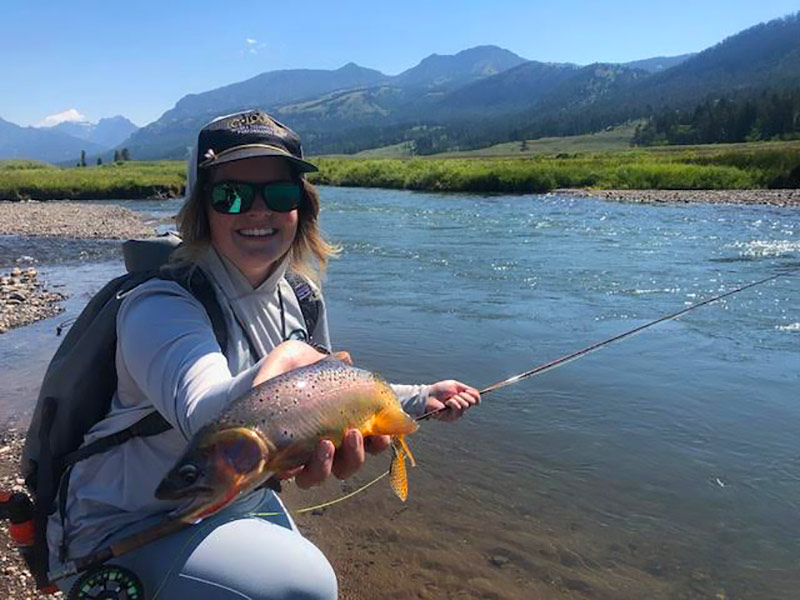Native to Yellowstone National Park and many surrounding waterways, the Yellowstone Cutthroat Trout is a favorite native fish of many anglers. The dominant fish in Yellowstone before the 1900s, Yellowstone Cutthroat trout are still abundant in America’s first national park but today are faced with a great deal of competition from invasive species like the Lake Trout. Yellowstone Cutthroats feature a red slash along their jaw and a dotted yellow-red body like most species of cutthroat but can be distinguished by a dark olive or gray coloration on their backs. According to the National Parks Service, the Yellowstone Cutthroat population in Yellowstone Lake and Yellowstone River account for the largest inland population of cutthroat trout in the world, meaning that there is a plethora of fantastic fly fishing opportunities for these beautiful fish in the national park. Yellowstone Cutthroat can be found outside the park, though, and are common in some lakes and streams of Idaho and Montana.

Like most cutthroat trout, Yellowstone Cutthroat prefers cool and high-elevated waterways and thrives in both rivers and lakes. Yellowstone Cutthroat grow larger than many other strains of cutthroat, and can commonly be caught between 12 and 18 inches, with fish over 20 inches not exceedingly uncommon. An angler in Idaho recently caught a Yellowstone Cutthroat measured at over 30 inches! Inside Yellowstone National Park, these fish reside in a variety of different types of water, from the very large Yellowstone Lake to small streams and alpine lakes. Outside of the park, Eastern Idaho and Southern Montana are home to native Yellowstone cutthroat, many living in lakes around the Bozeman and Livingston areas.
Like other cutthroat strains, Yellowstone Cutthroat trout spawn in the spring. Due to the cold temperature and high elevation of the water they typically inhabit, the spawning season for Yellowstone is usually late spring and can continue into mid-July. Because of the strain put on Yellowstone Cutthroat Trout from invasive species such as lake and brook trout, please give these fish space when you see them spawning. When the spawn is over, Yellowstone Cutthroats begin to feed voraciously and are usually very willing to eat large dry flies. Similar to other trout, the less fishing pressure Yellowstone Cutthroats see, the more willing they will be to take your fly. So, while spots that see lots of tourists and fishing pressure, like easy-to-access spots in Yellowstone National Park, will hold fish that can certainly be caught, fish in more remote areas will be much less picky and often more abundant. So get out there and don’t be shy to do that long hike, or to hire a guide with the local knowledge to avoid crowds and get you on the Yellowstone Cutthroat of a lifetime. Just remember to bring bear spray and practice backcountry safety measures like making a lot of noise, avoiding walking quickly into blind corners, and hiking with a group when possible. Good luck!